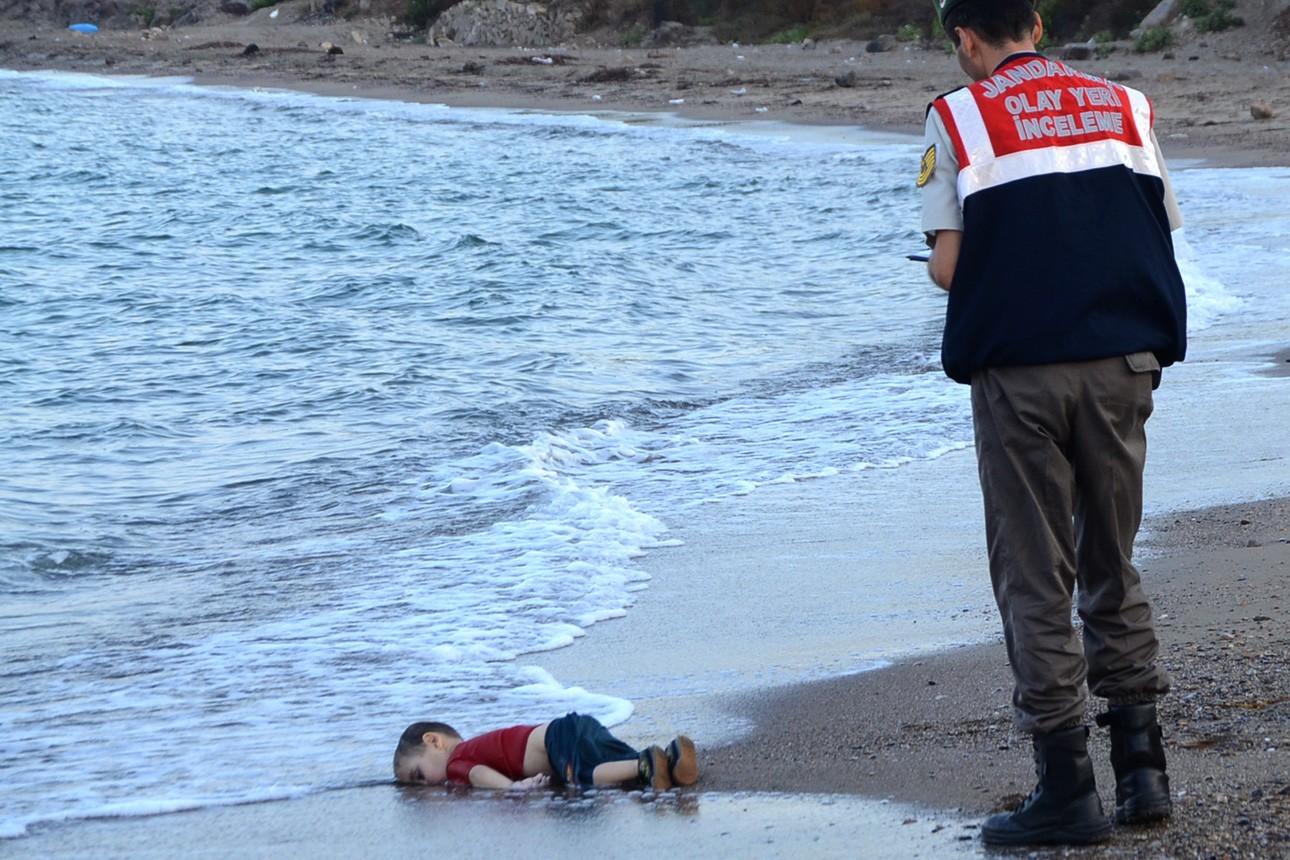
Oleg Klimov on Photography as a Witness to Evil

Has exhibited in Belgium, Great Britain, Germany, The Netherlands, Russia and the US. Won the all-Soviet Union “King of Reportage” prize in 1990. Author of documentary photography books on Russia, the Soviet Union and the war in Kosovo. Published a photography book called “The Legacy of Empire, My Doomed Homeland”, about the consequences of the collapse of the Soviet Union (published in Belgium, the Netherlands, Germany and France).
At this point it’s difficult to say which paper or journal was the first to publish the photograph of three-year-old Syrian boy, Aylan Kurdi, whose body was discovered on the beach by police in the Turkish city of Bodrum.
Kurdi’s family was trying to emigrate from Kobane (in Syria, not far from the Turkish border), where right now the battle between Syrian Kurds and fighters from Islamic State is raging. Aylan’s five-year-old brother, Galip, and their mother drowned along with him. Only their father, Abdullah, survived the shipwreck, and according to his words,
In sum, as a result of the shipwreck, 12 people died, 8 of which were children.
The photo of the dead three-year-old boy became famous around the entire civilized world within 24 hours, and citizens in Western Europe hit the streets with signs that said: “Welcome, refugees! Stop racism!” After the publication of just one photograph, the European Union was forced to make the decision to increase the quota of migrants allowed into Europe by a multiple of four, and to soften its stance towards immigration politics in cases of those arriving from war-torn countries.
We know very well that, every minute, every hour, there are hundreds of children in the world who die from famine, the cold or as a result of war, but at the same time we don’t get tired of repeating the phrase that, “the happiness of the whole world isn’t worth a single tear on the face of an innocent child.” However, we rarely notice the injustice happening around us because it doesn’t affect us.
{“img”: “/wp-content/uploads/2015/09/klimovcolumn_01.jpg”, “text”: “Photo: Nilufer Demir / Dogan News Agency / AFP Photo / EAST NEWS.”}
Look at this shot again. Cynically judging it, we can say that there is no composition or form, there is no so called decisive moment, only the essence of what happened: a dead child at the water’s edge. We can find hundreds of similar “fact-photos” in the criminal history of any government, but for some reason, it was exactly this shot that had a strong impact on international society. Does it then follow that the point isn’t about the photo or even about its contents, but rather about something else? The answer is that it does.
Sebastiao Salgado’s photos, aken according to the rules and norms of art during a famine in Africa, laid unclaimed on the shelves of the Magnum agency for several years. But then, unexpectedly, they started shooting at each other and with such a force that the entirety of progressive society decided to quickly come to the rescue.
The beauty of the form and the horror of the contents had a direct impact on the viewer and it became possible to display everything that fit into the framework of a new aesthetic. But does it follow that beauty will save the world? The answer is that it won’t.
From recent history we know that photography contributed to the stoppage of war in Vietnam and television stopped the war in Chechnya, and it does not contribute to today’s wars. We also know, however, that many photojournalists, including Salgado, have been forced to admit in desperation that their photographs are not able to change the world for the better because, if it was enough before to show the world tears on the cheeks of an innocent child, now it is necessary to show his or her corpse.
{“img”: “/wp-content/uploads/2015/09/klimovcolumn_02.jpg”, “text”: “Photo: AP Photo / Nick Ut / EAST NEWS.”}
We can introduce a lot of arguments in favor of which photographs save the world, which ones make it better, and which ones make it worse. We can endlessly discuss whether mass media is on the side of good or evil, but it follows that we must recognize unconditionally only one theory to which photography, mass media and art do not have a direct relationship: there is too much injustice in our world. It builds up in our hearts and souls, but there is a limit, a critical mass. The stronger we feel it, the greater we are conscious of ourselves as part of a world without space in which information flows instantly.
It doesn’t just make him cry, but also makes him ready to hit the streets and fight on the side of good and light because the critical mass has reached its limit.
It doesn’t matter what will be the last straw that turns our black hole into a quasar, radiating light; whether it’s a photo of the police taken on a mobile phone or a work of art, carefully produced by a photographer, within the framework of beauty and ugliness aesthetics, the important thing is that it will happen. In any case, however, it doesn’t follow that photography will save the world. It means that the world will be saved by each one of us and that photography will be a witness to that.
New and best




